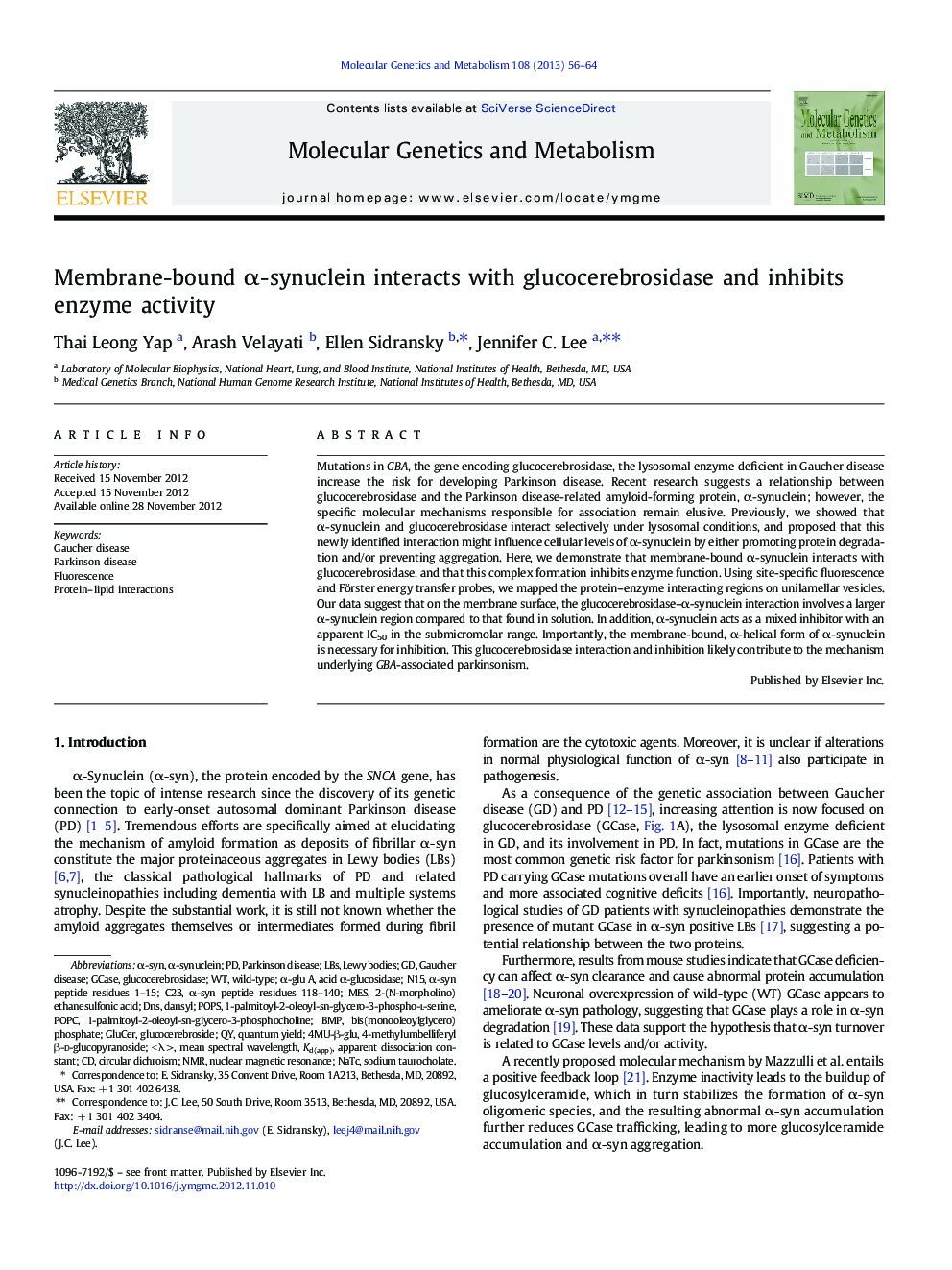| Article ID | Journal | Published Year | Pages | File Type |
|---|---|---|---|---|
| 1998723 | Molecular Genetics and Metabolism | 2013 | 9 Pages |
Mutations in GBA, the gene encoding glucocerebrosidase, the lysosomal enzyme deficient in Gaucher disease increase the risk for developing Parkinson disease. Recent research suggests a relationship between glucocerebrosidase and the Parkinson disease-related amyloid-forming protein, α-synuclein; however, the specific molecular mechanisms responsible for association remain elusive. Previously, we showed that α-synuclein and glucocerebrosidase interact selectively under lysosomal conditions, and proposed that this newly identified interaction might influence cellular levels of α-synuclein by either promoting protein degradation and/or preventing aggregation. Here, we demonstrate that membrane-bound α-synuclein interacts with glucocerebrosidase, and that this complex formation inhibits enzyme function. Using site-specific fluorescence and Förster energy transfer probes, we mapped the protein–enzyme interacting regions on unilamellar vesicles. Our data suggest that on the membrane surface, the glucocerebrosidase–α-synuclein interaction involves a larger α-synuclein region compared to that found in solution. In addition, α-synuclein acts as a mixed inhibitor with an apparent IC50 in the submicromolar range. Importantly, the membrane-bound, α-helical form of α-synuclein is necessary for inhibition. This glucocerebrosidase interaction and inhibition likely contribute to the mechanism underlying GBA-associated parkinsonism.
► α-Synuclein and glucocerebrosidase interact at the membrane interface. ► Complex formation is selective at a lysosomal pH. ► Membrane-bound, α-helical α-synuclein inhibits glucocerebrosidase function. ► A new molecular connection between Parkinson and Gaucher diseases is proposed.
